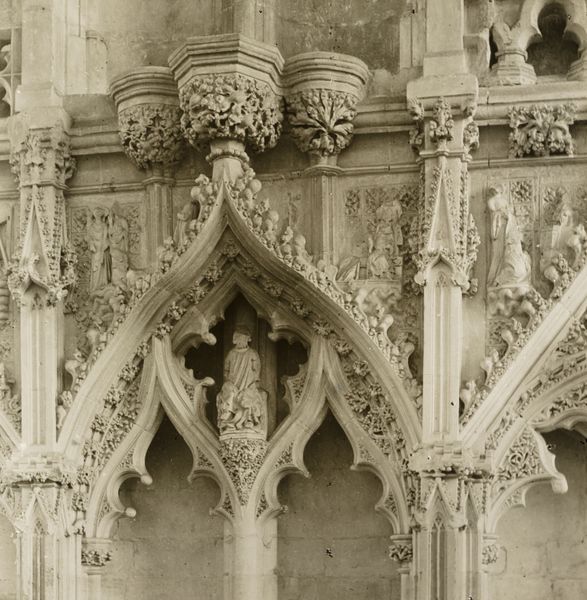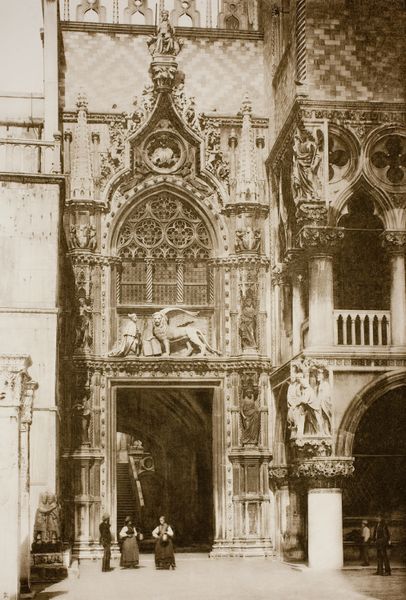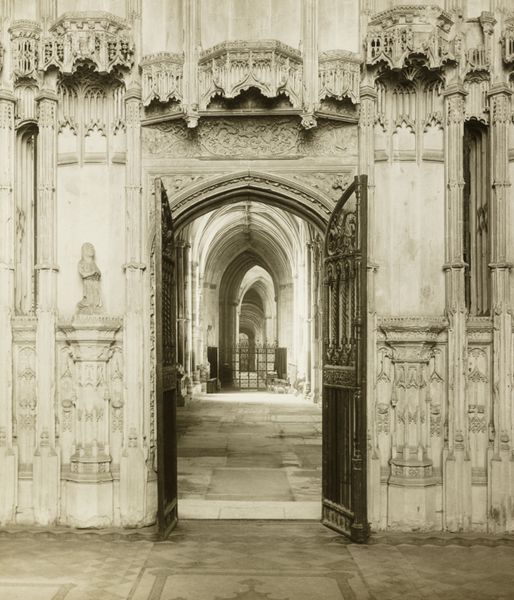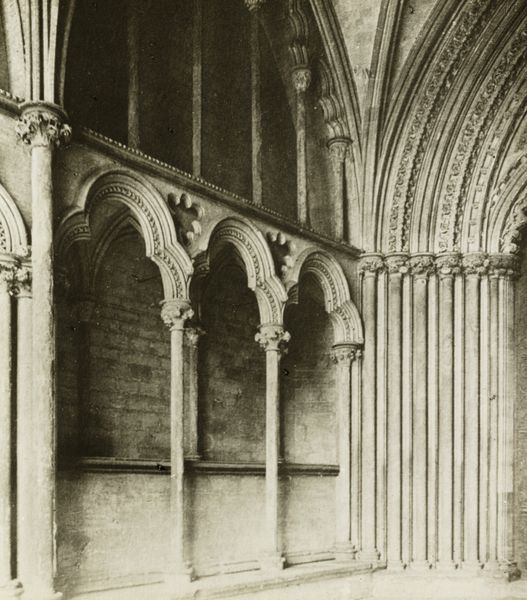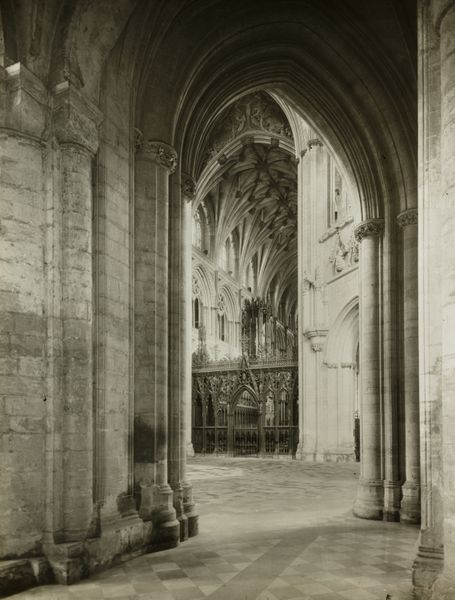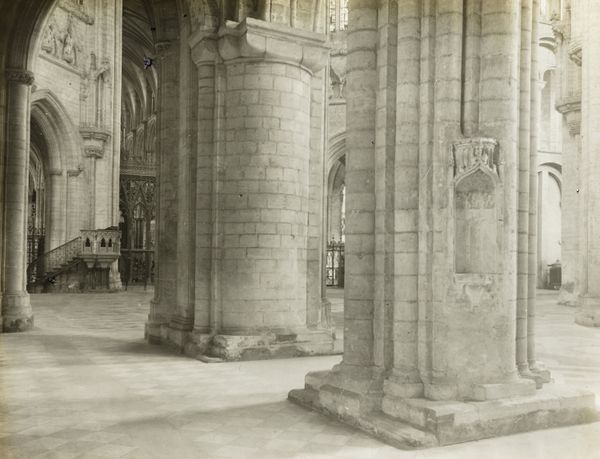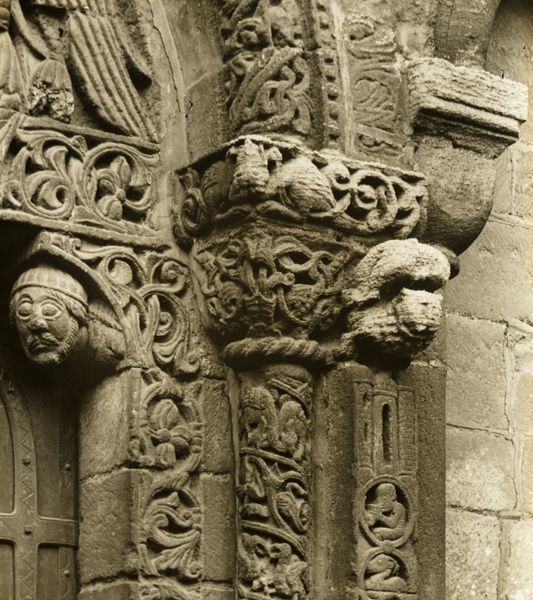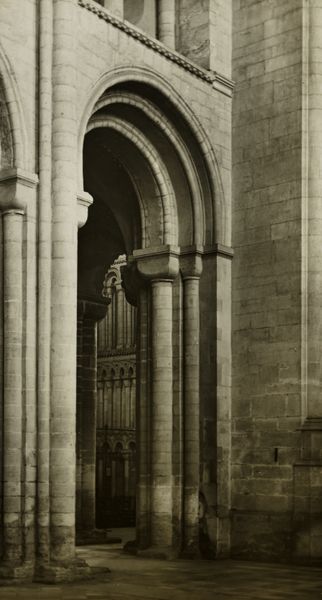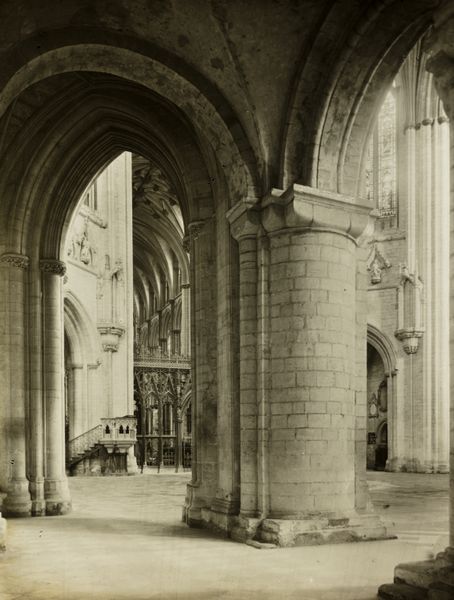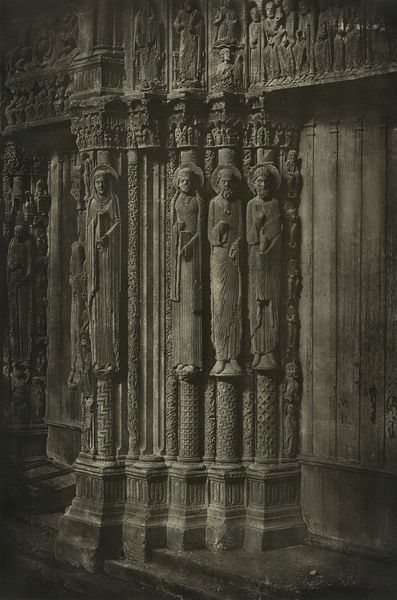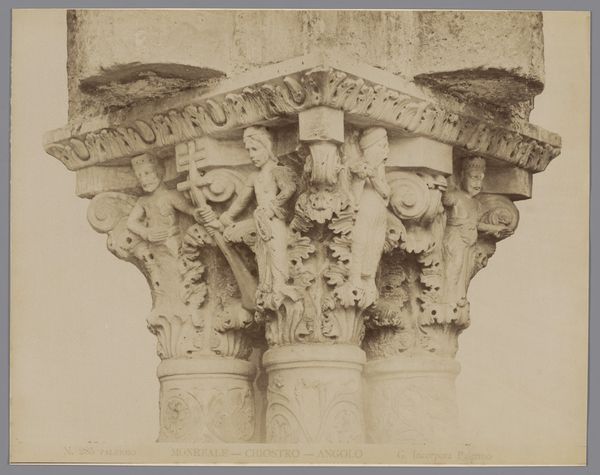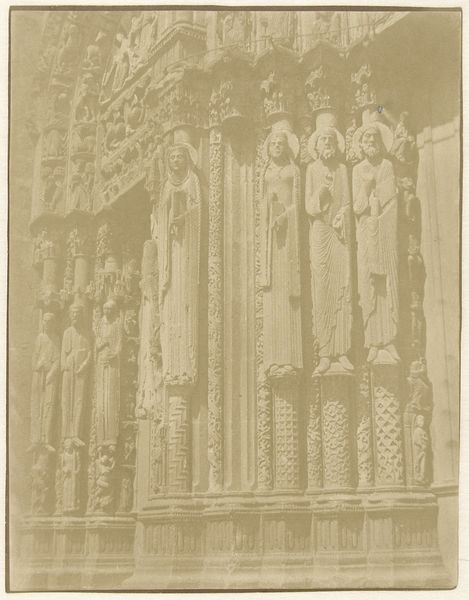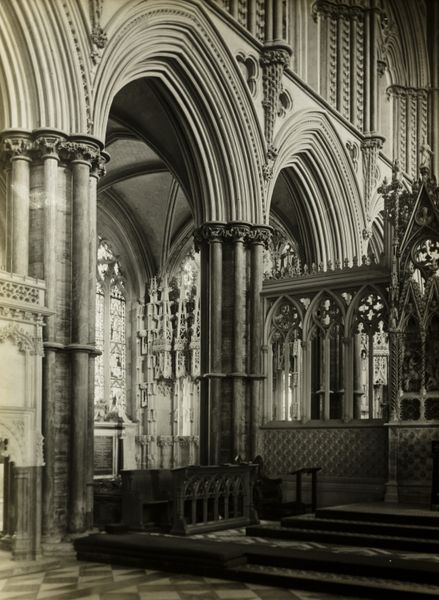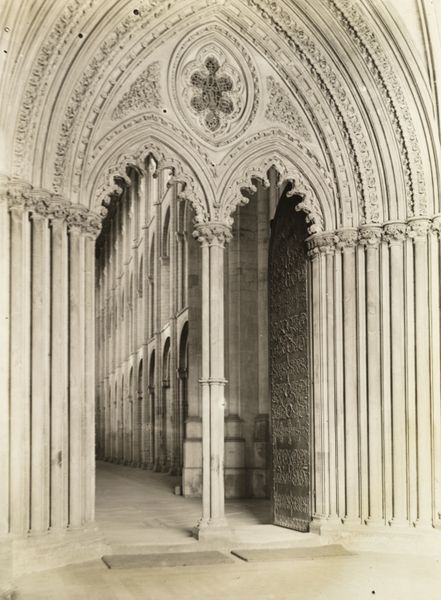
Dimensions: 8.2 × 8.2 cm
Copyright: Public Domain
Editor: Here we have Frederick H. Evans’s photograph, “Ely Cathedral: Lady Chapel, Details,” taken around 1891. It's incredibly intricate! All that stonework… How would you approach interpreting a work so focused on architectural detail? Curator: Let's think about the means of production, first. Photography in the late 19th century was becoming more accessible, but still required skill and specific materials. Evans chose to focus on this elaborate Gothic architecture; what statement might he be making by documenting it so meticulously using this relatively new technology? Editor: Maybe he’s trying to elevate photography, showing it could capture the same detail and grandeur as painting? There’s such a tactile quality to it despite being a photograph. Curator: Exactly! And consider the social context. The Gothic Revival was in full swing. By focusing on Ely Cathedral, a monument of medieval craftsmanship, Evans participates in a broader cultural interest in reclaiming a pre-industrial past, and thinking about art's labor as devotional work. Editor: So, it's not just about the aesthetic beauty of the architecture, but also about the values associated with the time it was created. Like, looking at it through a lens of labor, the contrast between hand-carved stone and mass-produced… photograph? Curator: Precisely. What do you make of that tension? The photographic print itself is a product, commodified art... competing for space in homes of similar bourgeois who fetishized craft. The question is where this places value on craft versus art, high versus low culture? Editor: I see. Evans's photograph isn't just a pretty picture, it’s evidence of the tension between artistic labour, cultural heritage, and the rise of mass production. Thank you! Curator: Absolutely, I've found it very insightful to see how photography captures that.
Comments
No comments
Be the first to comment and join the conversation on the ultimate creative platform.
